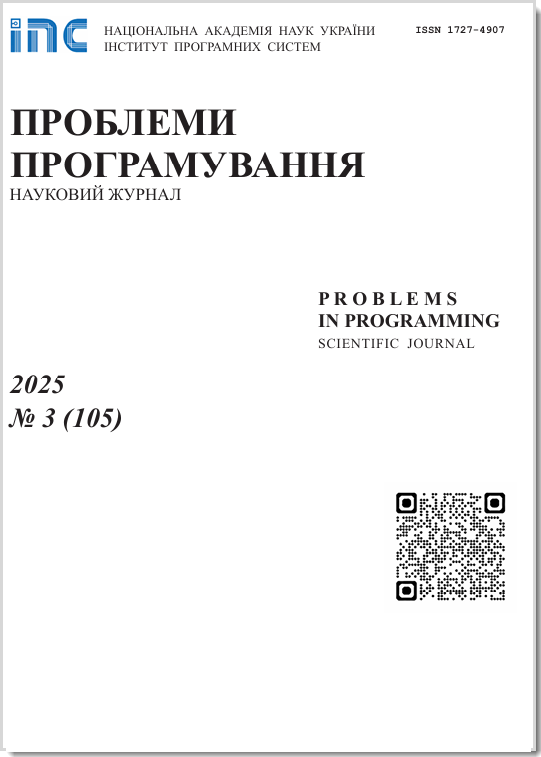“G_Sim” software providing simulations of human physiological responses to +/- Gz accelerations
Abstract
Specialized software “G_Sim”, providing simulations of human physiological responses to dynamic Gz ac celerations, is created and tested. “G_Sim” is based on a previously developed and published quantitative mathematical model (QMM) that describes human hemodynamics under given Gz profiles without or with special protective tools and algorithms. “G_Sim” is a modern information technology realized as an auto nomic executive module in the Delphi Pascal environment. By default, the biological parameters of QMM are tuned for the mean man, who is 175 cm in height and has a 70 kg mass. “G_Sim” has an intuitive user in terface (UI) that provides the user with procedures necessary to actualize characteristics of QMM, realize a computer experiment (simulation), visualize its results in graph forms for analysis, and save the chosen data for further analysis. The actualization concerns biological data associated with human sex, anthropometrics, age, and non-biological characteristics including acceleration profiles, characteristics of the anti-G suit, breathing techniques, and muscle stressing mode. UI's special windows provide additional tunings of the basic QMM. “G_Sim” upgrades the traditional training techniques on centrifuges and test flights. The novel beneficial effect of “G_Sim” provides the future fighter pilot with realistic-like visual knowledge concerning the dynamics of physiological and protective events. Therefore, simulations will clearly show ways to opti mize the combination of artificial protections to prevent negative effects (loss of vision or consciousness). Such knowledge will shorten training and minimize the anthropogenic risk of serious injuries or catastro phes during the training. Test simulations presented in the paper mainly illustrate the potential of “G_Sim” as an assistant informational technology.
Prombles in programming 2025; 1: 13-23
Keywords
Full Text:
PDFReferences
Burton, R.R.,Whinnery, J.E. Biodynamics: Sustained acceleration. In Fundamentals of Aerospace Medicine, 3rd ed.; DeHart, R.L., Davis, J.R., Eds.; Lippincott Williams & Wilkins: Philadelphia, PA, USA, 2002; pp. 122-153.
Slungaard E., McLeod J., Green, N.D.C., Kiran A., Newham D.J., Harridge S.D.R. In cidence of g-induced loss of consciousness and almost loss of consciousness in the Royal Air Force. Aerosp. Med. Hum. Perform. 2017, 88, 550-555. CrossRef
Newman D.G. The cardiovascular system at high Gz. In High G Flight: Physiological Effects and Countermeasures, 1st ed.; Newman, D.G., Ed.; Ashgate: Farnham, UK, 2015; pp. 57-72.
Park M., Yoo S., Seol H., Kim C., Hong Y. Unpredictability of fighter pilots' G duration by anthropometric and physiological charac teristics. Aerosp. Med. Hum Perform. 2015, 86, 307-401. CrossRef
Yun, C.; Oh, S.; Shin, Y.H. AGSM proficiency and depression are associated with success of high-G training in trainee pilots. Aerosp. Med. Hum. Perform. 2019, 90, 613-617. CrossRef
Polock R.D., Hodkinson, P.D., Smith T.G. Oh G: The x,y and z of human physiological responses to acceleration. Experimental Physiology, 2021,106,2367-2384. CrossRef
Albery W. B. Acceleration in other axes affects +Gz tolerance: Dynamic centrifuge simulation of agile flight. Aviation, Space, and Environmental Medicine, 2004, 75(1), 1-6.
Burton R., Whinnery J. Operational Ginduced loss of consciousness: Something old; something new. Aviation, Space, and Environmental Medicine, 1985,56(8), 812-817.
Cao X.-S., Wang Y.-C., Xu L., Yang C.-B., Wang B., Geng J., Gao Y., Wu Y. H., Wang X. Y., Zhang S., Sun X.-Q. Visual symptoms and G-induced loss of consciousness in 594 Chinese Air Force aircrew- A questionnaire survey. Military Medicine, 2012, 177(2), 163-168. CrossRef
Chung K. Y. Cardiac arrhythmias in F-16 pilots during aerial combat maneuvers (ACMS): A descriptive study focused on Glevel acceleration. Aviation, Space, and Environmental Medicine, 2001,72(6), 534- 538.
Eiken O., Bergsten, E., Grönkvist M. G Protection mechanisms afforded by the anti-Gsuit abdominal bladder with and without pressure breathing. Aviation, Space, and Environmental Medicine, 2011. 82(10), 972-977. CrossRef
Eiken O., Keramidas M. E., Taylor N. A. S., Grönkvist M., Gronkvist M. Intraocular pressure and cerebral oxygenation during prolonged headward acceleration. European Journal of Applied Physiology, 2017,117(1), 61-72. CrossRef
Grönkvist M., Bergsten E., Eiken O. Lung mechanics and transpulmonary pressures during unassisted pressure breathing at high Gz loads. Aviation, Space, and Environmental Medicine, 2008,79(11), 1041-1046. CrossRef
Henderson A. C., Sá R. C., Theilmann R. J., Buxton R. B., Prisk G. K., Hopkins S. R. The gravitational distribution of ventilation perfusion ratio is more uniform in prone than supine posture in the normal human lung. Journal of Applied Physiology, 2013, 115(3), 313-324. CrossRef
MacDougall J. D., McKelvie R. S., Moroz D. E., Buick, F. The effects of variations in the anti-G straining maneuver on blood pressure at +Gz acceleration. Aviation, Space, and Environmental Medicine, 1993,64(2), 126-131.
Sundblad P., Kölegård R., Migeotte P. F., Delière Q., Eiken O. The arterial baroreflex and inherent G tolerance. EuropeanJournal of Applied Physiology, 2016,116(6), 1149-1157. CrossRef
Whiny J.E., Forster E. The +Gz-induced loss of consciousness curve. Extreme Physiology and Medicine, 2013,2(1),19. CrossRef
Grygoryan R.D., Kochetenko E.M., Informational technology for modeling of fighters medical testing procedures by centrifuge accelerations. Selection &Training Advances in Aviation: AGARD Conference Proceedings 588; Prague, 1996. May 25-31, PP3,1-12.
Grygoryan R.D., High sustained G-tolerance model development.STCU#P-078 EOARD# 01-8001 Agreement: Final Report. 2002. 66 p. CrossRef
Grygoryan R.D. Problem-oriented computer simulators for solving of theoretical and applied tasks of human physiology. Problems of programming. 2017, №3, 102-111.
Grygoryan R.D. Modeling of mechanisms providing the overall control of human circulation. Advances in Human Physiology Research, 2022,4, 5 21. CrossRef
Grygoryan R.D. Problems associated with creating special software for simulating of human physiological responses to dynamic +Gz accelerations. Problems of programming, 2024; 1: 30-37. CrossRef
Grygoryan R.D., Degoda A.G. A mathematical model of human hemodynamics for use in special software simulating pilots' physiological responses to sustained +Gz accelerations. 2024; 90. DOI: 10.5281/zenodo.11357990
DOI: https://doi.org/10.15407/pp2025.01.013
Refbacks
- There are currently no refbacks.




